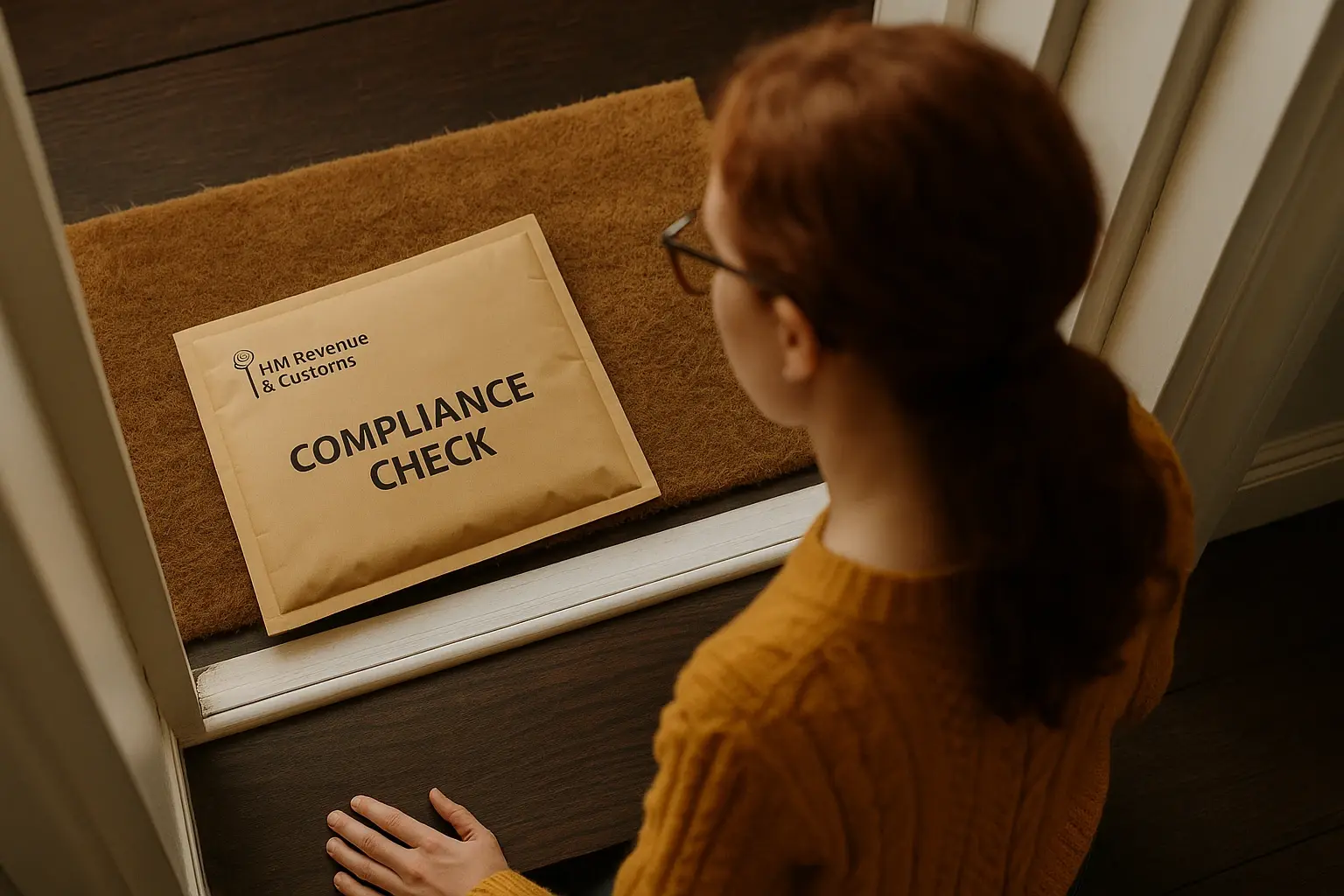Some creative business owners get an unwelcome surprise one morning - a brown envelope from HMRC titled “Compliance Check.” Your heart sinks a little. What did you do wrong?
First things first: don’t panic. A compliance check doesn’t automatically mean you’re in trouble. It simply means HMRC wants to double-check that your tax returns and records are accurate.
Let’s break down what it means, and what to do next.
What is a Compliance Check?
A compliance check is HMRC’s version of a quality-control exercise. It’s how they make sure individuals and businesses are paying the right amount of tax, at the right time, and following the rules.
They might look at your:
- Self Assessment tax return
- Company Corporation Tax return
- VAT returns
- PAYE and payroll records
- Or even a specific claim (for example, an R&D tax relief or business expense)
In short, it’s a review, not an accusation.
Why You Might Have Been Picked
HMRC runs compliance checks for all sorts of reasons, and sometimes no reason at all:
- Something on your tax return doesn’t quite match other information HMRC holds.
- Your figures look unusual compared to others in your sector.
- You’ve made a large refund or relief claim (such as R&D tax credits).
- Your filings or payments have been late.
- Or it’s just your turn — some checks are completely random.
What Happens During a Check
You’ll usually receive a letter first. It will explain:
- What area of tax they want to review, and
- What records or explanations they need from you.
They might ask for:
- Bank statements
- Invoices and receipts
- Contracts or agreements
- Payroll reports
- Details of specific transactions
Sometimes they’ll want to meet (either online or in person).
Once HMRC has reviewed everything, they’ll either:
- Close the check with no change (happy days!), or
- Make an adjustment if they think something needs correcting.
If extra tax is due, they’ll add interest and possibly a penalty — depending on whether the error was considered careless or deliberate.
What to Do If You Get a Compliance Check Letter
Here’s how to handle it calmly and professionally:
1. Don’t ignore it.
The letter will have a deadline. Missing it can make things worse.
2. Contact your accountant immediately.
They can communicate with HMRC on your behalf, review the request, and make sure you don’t provide more information than necessary.
3. Gather your records.
If your bookkeeping is up-to-date, most of what’s needed will already be at your fingertips.
4. Be honest and transparent.
If there has been an error, it’s almost always better to volunteer it early — HMRC usually reduce penalties for cooperation.
5. Keep everything polite and factual.
Compliance officers are humans doing their job. A calm, well-organised response goes a long way.
How It Ends
Many checks end without any change — especially where there’s a good accountant involved.
If HMRC does find something, you’ll get a written closure notice or amendment letter explaining the outcome. You’ll always have a right to challenge or appeal their findings if you disagree.
Final Thoughts
If a compliance check letter drops through your door, remember:
- It’s a review, not an accusation.
- With the right help, it’s manageable.
- And it’s often a good reminder of why keeping your records tidy all year round really matters.
So if you’re a creative business owner and ever get that dreaded envelope — don’t panic, call your accountant.
Fancy a chat?
If you have a pressing tax or accountancy concern, why not book a free, no obligation, meeting with an expert.
Found that content useful?
Why not sign up for more good stuff!!


